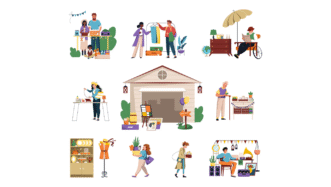LESSON OVERVIEW
This lesson plan is based on a video explaining why we always seem to have room for dessert and introduces dinner table phrases for B1 students.
VOCABULARY
The worksheet starts with an exercise in which students can check their knowledge of traditional British, American and Australian dishes. They look at the list of the dishes and say which of them are sweet and which are savoury. What’s more, they discuss which dishes they know or have tried as well as express their preference when it comes to savoury and sweet food. Next, students match halves to create a few phrases that will next appear in the video.
VIDEO
Students watch the first part of the video and they just need to answer three questions. In the next task, they complete gaps with words given (the words come from the previous exercise). After doing that, they watch the rest of the video and find more information about the statements from the previous task. This part of the worksheet ends with a short discussion about the experiment shown in the video.
DINNER TABLE PHRASES
The last part of the lesson plan deals with dinner table phrases. Students get a list of phrases as well as responses. They have to match the phrases to the appropriate responses. The task includes phrases such as help yourself, enjoy your meal, be full, etc. Finally, the worksheet ends with a speaking activity. Students work in pairs and create short conversations using the phrases they’ve just learnt. There are three situations that students can role-play but feel free to add more if you think your students will enjoy that.
WORKSHEETS
Subscribe to unlock these and many other Standalone lesson lesson plans with the Unlimited plan
Subscribe











great
Awesome lesson plans!!! Very useful and appealing. Respect!!!
I would need to say that this worksheet is a bit too advanced for B1 level. Words such as satiety, s’mores, tater tots are too hard for this level. It would be better if it was at least B2/C1. There are too many words to remember.
Thank you for your comment! We think students don’t necessarily need to memorise words like ‘satiety’ and ‘tater tots’ and instead focus on conversational phrases for dining and learning food-related words like ‘second helping’ and ‘flavours’.
s’mores and tater tots are brand names, obviously not too advanced for literally anyone over the age of 5
awesome !
😊😊😊